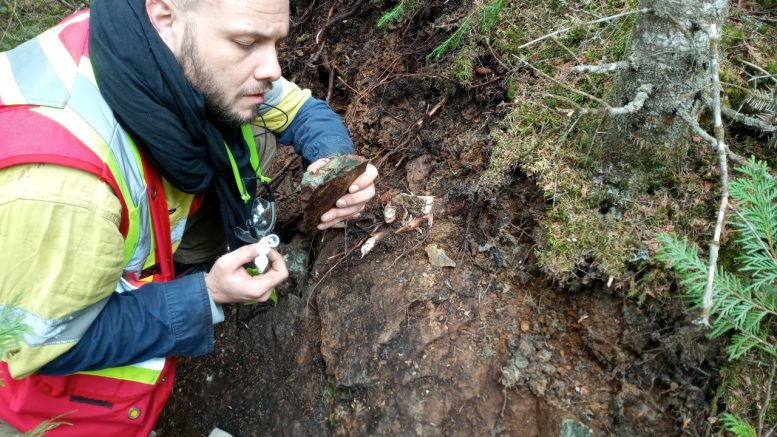Mistango River Resources (CNSX: MIS) has developed a geological model for its 34-sq.-km Eby-Baldwin project, located 10 km west of Kirkland Lake in the historic “Mile of Gold” of the Kirkland Lake district in Ontario.
The model considers Eby-Baldwin in the broader context of the Kirkland Lake district and how the project relates to the adjacent Macassa mine owned by Kirkland Lake Gold (TSX: KL; NYSE: KL).
The company has been acquiring parcels of land in the area for some time and recently purchased two additional landholdings, the most significant of which is the 21 sq. km Teck-Kirkland property, purchased from Hinterland Metals (TSX: HMI). The acquisition in late March effectively doubled the size of the Elby-Baldwin project.
“Nobody has properly explored the property, partly because the land package was fragmented and partly because the previous owners did little to develop the project,” Stephen Stewart, CEO of Mistango, said in an interview. “So, it was a little like herding cats to put these land packages together for us to systematically explore the property.”
The property, Stewart noted, contains the Baldwin underground mine, which between 1929 and 1938 produced 43 oz. gold from 81 milled tonnes at a recovered grade of 18.6 grams per tonne. The property has been explored on and off since the 1920s, with surface prospecting, shallow shaft excavations and more recent diamond drilling and geophysical surveying delineating several targets, including the Baldwin mine.
The major stakeholders in the company now include mining financier, Eric Sprott, who owns 29.4% of the issued and outstanding common shares in the company on a partially diluted basis, and Orefinders Resources (TSXV: ORX), which acquired a 31% interest in the junior company on May 3, 2019, and successfully replaced the previous management team in October.
“So far, we’ve been successful in re-positioning and recapitalizing the company, including bringing in Eric Sprott in two different rounds, once in February at 6.5¢ and again in May at 27.5¢,” Stewart said. “There has been very little modern exploration carried out at the property, especially at depth, where possible high-grade mineralization exists as an extension of the deposits around the town of Kirkland Lake.”
The geological model, Stewart added, will help them better understand the relationship between the host rocks, their deformational history and hydrothermal fluid systems and the gold mineralization, as well as the project’s relationship to neighbouring high-grade gold deposits like Kirkland Lake Gold’s Macassa, located 5 km to the northeast. Macassa produced 241,297 oz. gold in 2019 and contains proven and probable reserves of 3.2 million tonnes grading 21.9 grams gold for 2.25 million contained oz. gold.
Mistango’s model suggests that the Eby-Baldwin project is situated at the confluence of several significant gold-hosting structural breaks, including Amalgamated, Kirana and the Cadillac-Larder Lake break (CLLB), making it an optimal setting for gold mineralization, Stewart noted.
“According to our interpretation of the model, these structures continue westward onto Eby-Baldwin where they converge with the CLLB,” Stewart said. “This was very exciting for us as it suggests that the property has the potential to host a significant gold deposit due to the structural similarities to the Macassa mine.”
Kirkland Lake Gold’s deposits, for instance, are located in subsidiary structures of the CLLB, with the Macassa deposit controlled by the Main break and the South mine complex controlled by the Amalgamated break, Stewart said.
The model will be integrated into the company’s exploration program, which started on June 2, Stewart noted. The company plans to begin drilling high-potential targets at the Main and Amalgamated breaks to test the convergence of the major structures, with drilling slated to begin in the summer.
It also plans to conduct a ground-level induced polarization survey and high-resolution drone magnetics to delineate structural controls as well as detailed structural mapping of the surface outcrops.
At press time in Toronto, Mistango was trading at 24¢ per share within a 52-week trading range of 2¢ and 35¢.
The company has around 113 million common shares outstanding for a $27.81-million market capitalization.


Be the first to comment on "Mistango River starts exploration at Eby-Baldwin project in Ontario"